
Mars as a Planet is cold and dry. However, it may not be dead. Life on Mars would have to deal with harsh radiations. It may only exist under the soil. Nevertheless, the possibilities of life on Mars are significant. It is mainly due to its similarities with Earth.
Even so, life on Mars has not yet been proved. The idea of having another habitual planet has intrigued people for centuries. Therefore, if you have ever wondered about life on Mars, you're going to want to read on...
Should Mars be Investigated?

No matter how insignificant the changes, scientists should make sure of any signs of life on Mars. It should not just be about possibilities but about the vast knowledge we inherit. Furthermore, the existence of another life form needs to be evaluated for a potential threat.
Robotic studies on Mars have significantly improved over the years. We might be very close to picking up samples and studying them on Earth. We are moving towards technological advancement every day. Therefore, it is expected for humans to travel to Mars soon as well.
The History of Research On Mars

Scientific searches on Mars began in the 19th century. Early work focused on phenomenology and bordered on fantasy. However, the ongoing modern scientific inquiry has emphasized the search for water, chemical biosignatures in the soil. Furthermore, it looks into rocks at the planet's surface, and biomarker gases in the atmosphere.
Research says at least two-thirds of Mars' surface is more than 3.5 billion years old. Thus, it may hold prebiotic conditions leading to abiogenesis. The search for evidence of habitability, taphonomy (related to fossils), and organic compounds on Mars is now a primary NASA and ESA objective.
A Rock—From Mars

On 7 August (1996), reporters, photographers and television camera operators surged into NASA headquarters in Washington, D.C. The crowd focused not on the row of seated scientists in NASA's auditorium but a small, clear plastic box on the table in front of them.
Inside the box was a velvet pillow, and nestled on it like a crown jewel was a rock—from Mars. The scientists announced that they’d found signs of life inside the meteorite. NASA’s administrator Daniel Goldin gleefully said it was an ‘unbelievable’ day. The rock had opened many doors for scientific research and development on Mars.
The Rock’s Journey from Mars to Antarctica

The researchers explained that the rock had formed 4.5 billion years ago. It remained on Mars until 16 million years ago, when it was launched into space. This might have happened due to the impact of the Asteroids.
The rock wandered the inner solar system until 13,000 years ago. After that, it found its way to Earth and fell into Antarctica. It sat on the ice near Allan Hills until 1984, when snowmobiling geologists scooped it up. The rock was then named ALH84001.
The Rock’s Peculiar Chemistry
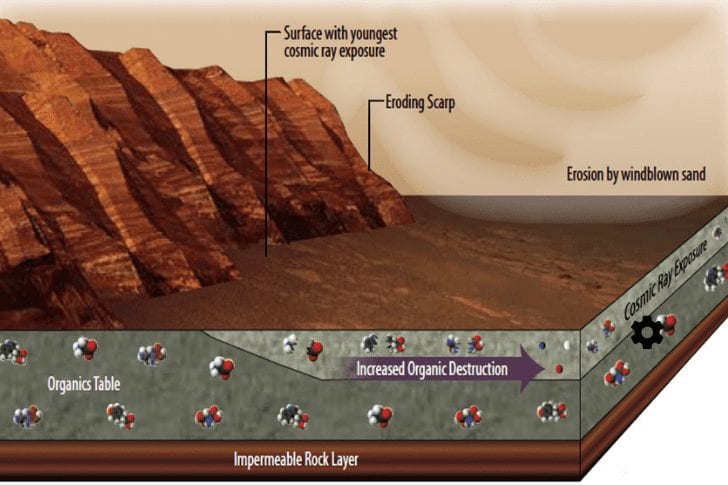
David McKay of the Johnson Space Center along with his colleagues found that the rock had an unusual chemical makeup. It contained a combination of minerals and carbon compounds that on Earth are created by microbes. It also had crystals of magnetic iron oxide, which is produced by some bacteria.
A view through the electron microscope showed that the rock had chains of globules that bore a striking resemblance to chains from some bacteria form on Earth. The claim ALH 84001 contains evidence of ancient Martian life was later rejected. However, the controversy associated with it is now seen as a historically significant moment in the development of Exobiology.
Is Mars Habitable?
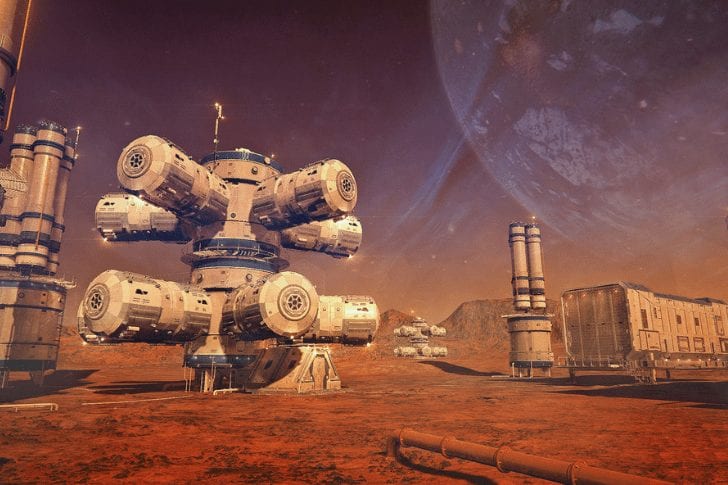

Organic compounds inside sedimentary rocks on Mars are precursors for prebiotic chemistry. Furthermore, discoveries that liquid water was present on ancient Mars, further supports the possible early habitability of life on Mars. Potential habitability of the Martian surface can be judged by 19 or 20 environmental factors. These factors include water availability, temperature, and the presence of nutrients, an energy source, and protection from solar ultraviolet and cosmic radiation.
Some large carbon-based molecules still remain in the soil of Mars. Therefore, the final consensus is that if life exists —or existed— on Mars, it could be found or is best preserved in the subsurface, away from present-day harsh surface processes.
Loss of Magnetic Field

The Mars Science Laboratory on the Curiosity rover has instruments is designed so that scientists could answer the questions of whether it's possible for life to have existed in the past. And whether any traces of it would be detectable.
The challenges for living things on Mars started billions of years ago, when the planet, for an unknown reason, lost its magnetic field. That left Mars with nothing to block the solar wind, which slowly bled off the planet's atmosphere. This also exposed the planet surface to all of the radiation from the sun.
The Importance of the Magnetic Field

Earth acts like a giant magnet but Mars does not act this way. Earth's magnetic field turns away dangerous particles of space radiation. Without a magnetic field on Mars and with much, much less air than on Earth, more harmful space radiation reaches its surface.
However, some measurements concur that there probably is water on Mars. Compared to Earth, it is in much less volume as well. It is also so cold there that most of the water is probably not liquid but rather is ice.
Implications of Radiation

We all know radiations are harmful but radiations on Mars are extensive. These ionizing radiations ruined organic molecules on the surface. These molecules contained Carbon. Lab experiments show, radiation at levels similar to those on Mars' surface to destroy up to 90 percent of large carbon molecules.
Future missions will have to get below the planet's surface. There might be traces of previous life down there. There could be signs of an ancient environment. This would be about 6.5 to 10 feet into the ground.
Presence of Water

Besides protection from radiation, life also needs liquid water. There are some encouraging signs that the vital molecule is present on Mars. Researchers have identified mudstones and sedimentary bands, which form only if there is water present for a long time, on the order of millennia.
In another good sign, Curiosity found evidence that water can bubble to the Martian surface and turn to frost. Perhaps that water could be bringing organisms to the surface. As for surface life existing now, that is much less likely, due to the intense radiation.
Another Species on Mars?

The existence of carbon molecules doesn't necessarily mean that life existed. Such molecules can show up from three sources. One is interplanetary and interstellar dust, which are rich with such molecules. The second is chemical reactions underground.
The last one is the actual living things. The search for Martian life could provide several benefits. Beyond the scientific value of finding alien organisms, researchers want to identify living creatures on Mars because they might be dangerous to humans.
Possibility of Life in the Past

If life appeared on Mars in the past, when the planet might have been wetter, with a thicker atmosphere, then organisms could have gotten a foothold. That is, life could have then adapted to a higher-radiation environment over time and retreated deeper underground for protection.
Four billion years ago, the Martian surface was quite habitable, featuring rivers, lakes and even a deep ocean. Some astrobiologists view ancient Mars as an even better cradle for life than Earth was. They suspect that life on our planet may have come here long ago, aboard Mars rocks, blasted into space by a powerful impact.
Mars was More Livable Than Earth
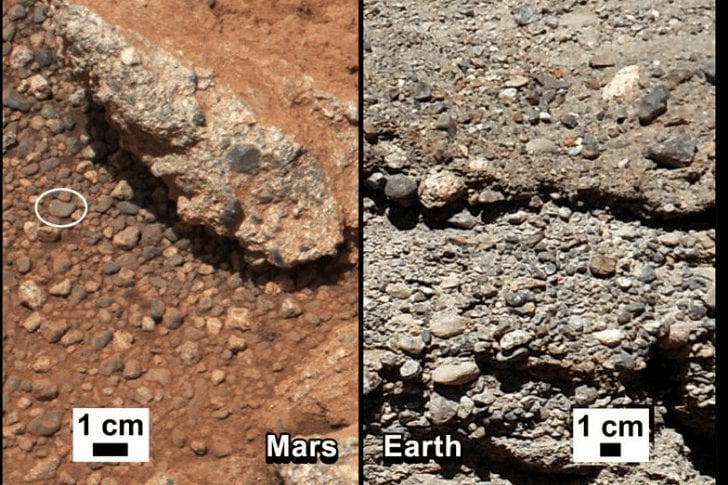
Earth is the only place that we know for certain supports life. From Earth, even with our most powerful telescopes, we just cannot see enough detail on Mars. Therefore we never got a close enough look at the planet.
However, things changed when Mars lost its global magnetic field. Observations by NASA's MAVEN orbiter suggest that the process had transformed Mars into the cold, dry world we know today. Earth still has its global magnetic field, explaining how our planet remains so livable.
Missions to Mars
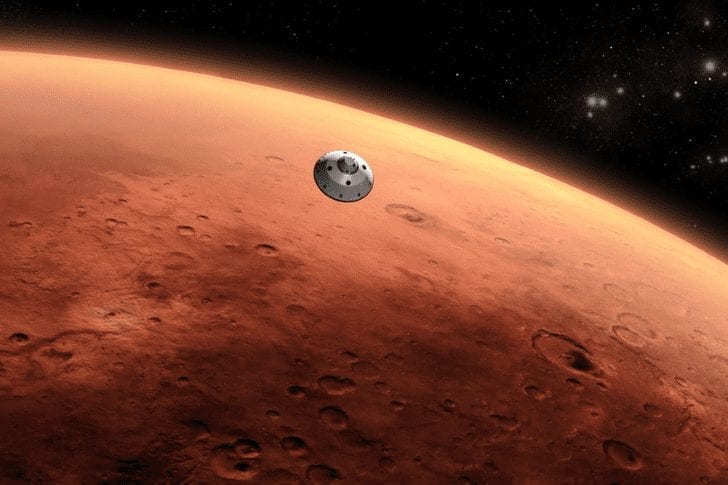
Robotic spacecraft have given us wonderful views in the past. Each mission teaches us more about this fascinating planet. However, no human has ever tried to journey to Mars. There seems to be no possibility of that happening soon either.
In the meantime, NASA is working hard to discover whether there is life on Mars. The United States and other countries have been sending spacecraft to orbit or land there since the 1960s. We have learned that Mars is more similar to Earth. Therefore, it is a good place to look for life.
Robotic Space Crafts – Viking 1 & 2

In 1976, NASA landed robotic spacecraft named Viking 1 and Viking 2 on Mars. One of these landers worked there for nearly 4 years and the other lasted more than 6 years. They were specifically designed to discover whether bacteria were living in the soil.
The spacecraft had cameras that returned thousands of images of the surface, showing the changing seasons and details of the rocks and dirt near the stationary landers. The cameras showed us that there weren't any large creatures wandering around!
Speculation Continues – Life on Mars?

This turn of events doesn't necessarily mean that Mars is a dead planet today. If Mars had life 4 billion years ago, Mars still has life. According to scientists, “Nothing has happened on Mars that would've wiped out life.”
Therefore, it is assumed if there was life on Mars, it may have moved around. These life forms might have gone into hiding. Once these life forms are discovered, it will open doors to many discoveries.
Search For Life Underground
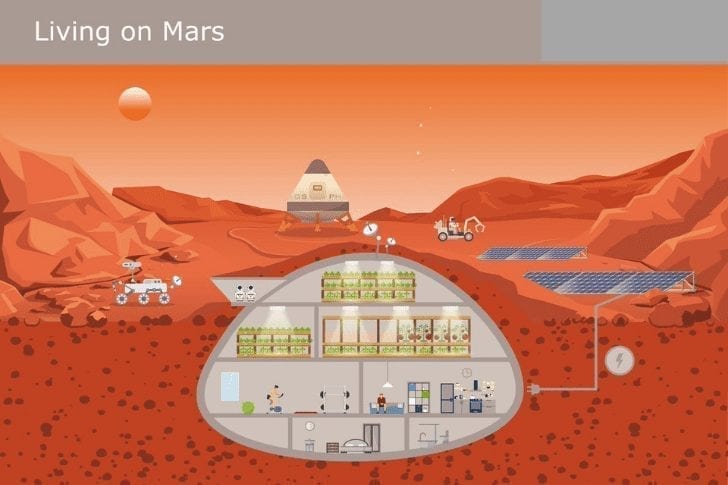
One of the most promising hiding places is the Martian underground. Though the Red Planet's surface has no liquid water these days — apart, possibly, from temporary flows on warm slopes now and again — there are likely lots of buried aquifers.
Observations by Europe's Mars Express orbiter suggest that a big lake may lurk beneath the Red Planet's South Pole. The possibilities of finding life in those water sources are endless.
Circumstances Needed for Life to Flourish
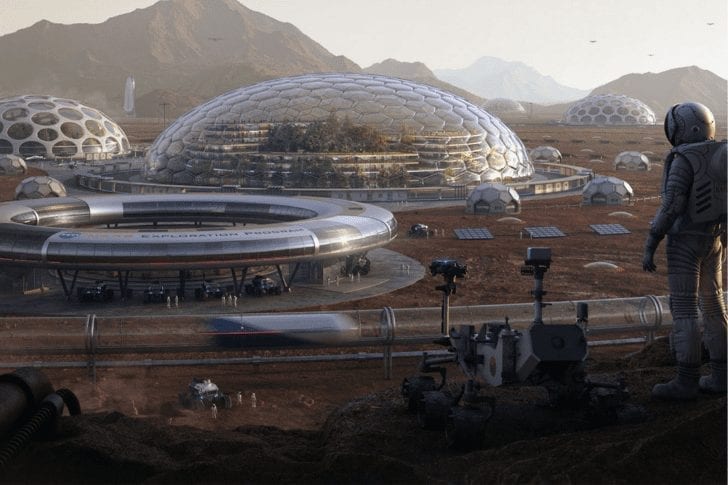
All forms of life need water to survive. It is likely that if life ever evolved on Mars, it did so in the presence of a long-standing supply of water. Therefore, the search for water on Mars continues. Scientists are looking for life in areas where liquid water was once stable.
Future researched focus the area below the surface where it still might exist today. There still might be hydrothermal pools on Mars that provide places for life. We know that water - ice is present at the Martian poles, and these areas will be good places to search for evidence of life as well.
Life Needs Energy
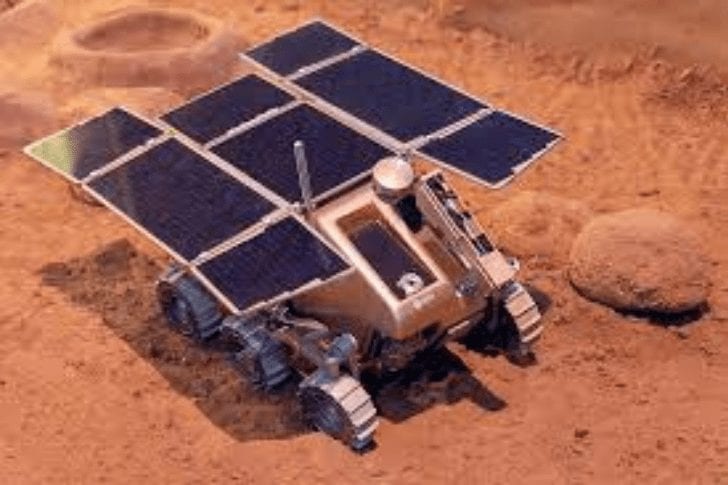
In addition to liquid water, life also needs energy. Therefore, future missions will also be on the lookout for energy sources other than sunlight. It is unlikely to find it on the surface of Mars given the presence of superoxides that break down organic (carbon-based) molecules on which life is based.
On Earth, we find life in many places where sunlight never reaches--at dark ocean depths, inside rocks, and deep below the surface. Chemical and geothermal energy are also energy sources used by life forms on Earth. Perhaps tiny, subsurface microbes on Mars could use such energy sources too.
Bio Signatures Left by Earthly Microbes
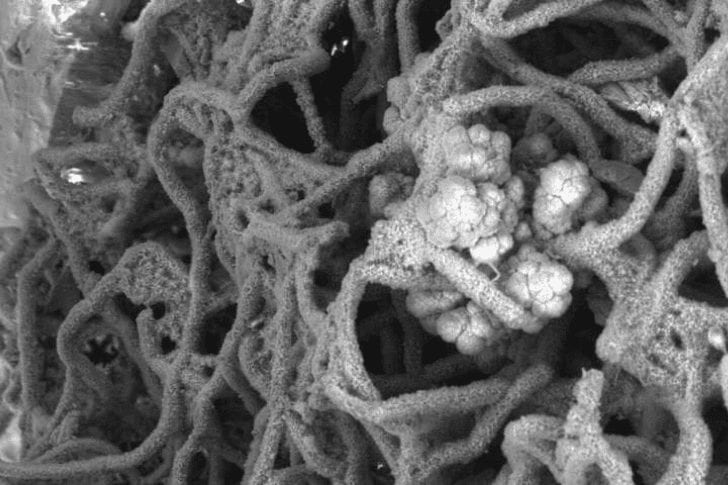
Martian meteorites resemble in context to biosignatures left by earthly microbes. NASA plans to look for life on Mars by searching for biosignatures of current and past life. The element carbon, for instance, is a fundamental building block of life. Knowing where carbon is present and in what form would tell us a lot about where life might have developed.
We know that most of the current Martian atmosphere consists of carbon dioxide. Hence, Carbonate minerals could form on Mars. The presence of these minerals would be a clue that water had been present for a long time. Perhaps long enough for life to have developed.
Records - Fossil Deposits
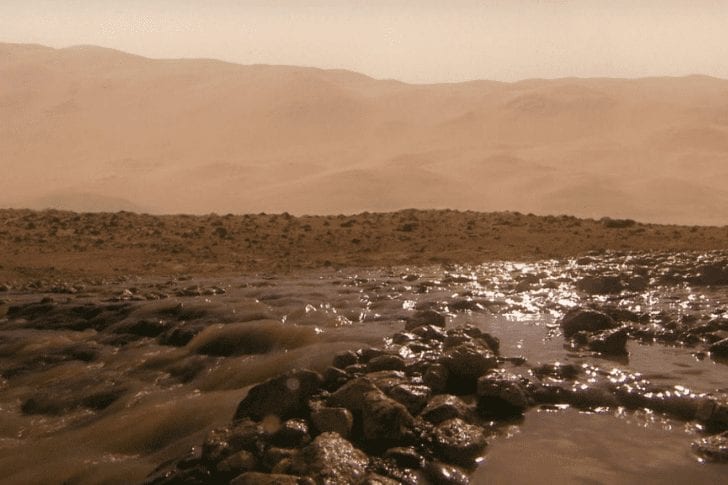
On Earth, fossils in sedimentary rock leave a record of past life. Based on studies of the fossil records on Earth, we know that only certain environments and types of deposits provide good places for fossil preservation.
Similarly, scientists assume there to be the existence of such records on Mars. Searches are already underway to locate lakes or streams that may have left behind similar deposits. These deposits might have all the answers we are looking for.
Life Might be Very Different on Another Planet

It is also possible that Scientists have not been able to study unknown results. This means that the kinds of biosignatures our scientists know how to identify are those found on Earth. It's possible that life on another planet might be very different.
Therefore, the challenge is to be able to differentiate life from nonlife on Mars. It could vary in chemistry, structure, and other characteristics as well. Life detection technologies under development will help define life in non-Earth-centric terms so that we can detect it in all the forms it might take.
DNA is the Answer

Researchers are pushing to expand the hunt to find Martian life. One of them is molecular biologist Gary Ruvkun, who is based at Massachusetts General Hospital and Harvard Medical School. Ruvkun is one of three principal investigators on the Search for Extra-Terrestrial Genomes (SETG) project.
They are developing an instrument to detect past or present DNA- or RNA-based life on Mars and other alien worlds. He was on the Breakthrough Discuss panel with several other researchers. He also gave a talk at the conference laying out the case for putting the SETG instrument on future Mars rovers and other robotic explorers.
Panspermia – Extent of Life in the Galaxy

Panspermia is the idea that life has spread widely throughout the solar system and the galaxy. It could be by either natural or artificial means. If life did indeed come to Earth from somewhere else, there's a good chance it once flourished on Mars as well. The Red Planet could have been the source, or it may have been seeded as Earth was.
According to some researchers, panspermia is very likely a true phenomenon. It had been cited as supporting evidence to the very early emergence of ATP synthase. It is the enzyme that makes the energy-storage molecule adenosine triphosphate.
Life form in Galaxy - Similar to Earth

ATP synthase goes back to the base of the tree of life on Earth, meaning this intricate and complex molecule was up and running by about 4 billion years ago. It's not just that life kind of got up to the kind of work. It got to be super highly evolved very fast.
If panspermia is indeed a thing, then any life-forms we find on Mars — or anywhere else in our solar system — will likely be related to us. That is, such organisms will use DNA or RNA as their genetic molecule. It seems idiotic to not look for DNA on Mars.
Existence Beyond Mars

Mars isn't the only place in our solar system where alien life might flourish today. Most astrobiologists would put the Red Planet further down the list. The Jupiter moon Europa and the Saturn satellites Enceladus and Titan would come first.
Europa and Enceladus harbor deep oceans of salty liquid water beneath their icy shells. Titan is thought to have a buried water ocean as well, and it also sports lakes and seas of liquid hydrocarbons on its surface. NASA is developing an ocean-characterizing Europa flyby mission that will launch in the early to mid-2020s.
Venus Has Something in Store
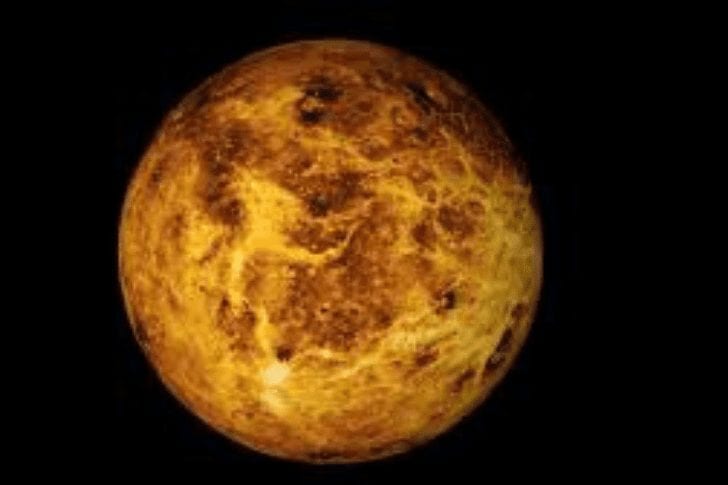
Scientists say Venus, a climate-change cautionary tale for Earth, might still harbor some habitable redoubts. Like Mars, Venus once had plentiful surface water. Nevertheless, a runaway greenhouse effect baked the water away. It left the planet with surface temperatures high enough to melt lead.
However, the conditions appear to be very clement about 30 miles (50 km) above the Venusian surface. The chances of modern-day Venus life are low because of the dewatering of the planet. Regardless, the possible existence of cloud-dwelling life on Venus needs to be investigated.
Imagine Living on Mars
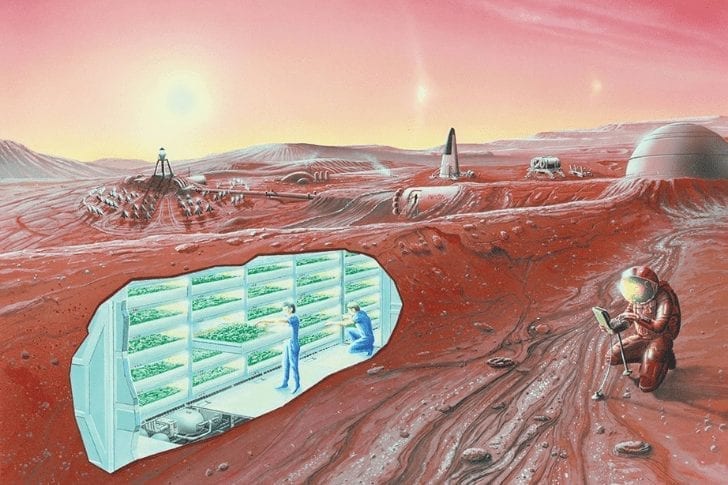
The idea of living on Mars has been a staple of science fiction since the 19th century. The Fictional American astronomer Percival Lowell speculated that the Red Planet had ancient canals built by intelligent extraterrestrials. If this sci-fi dream were to ever become reality, what would it be like to live on Mars?
There have been numerous successful missions to the Red Planet. It includes the deployment of four Mars rovers, the now-defunct Sojourner and Spirit, and the still-active Opportunity and Curiosity. The list also includes NASA's Mars Odyssey spacecraft, which produced a map of the entire planet. The map gave insight into what it would be like to live on Mars.
If Humans were to Colonize Mars
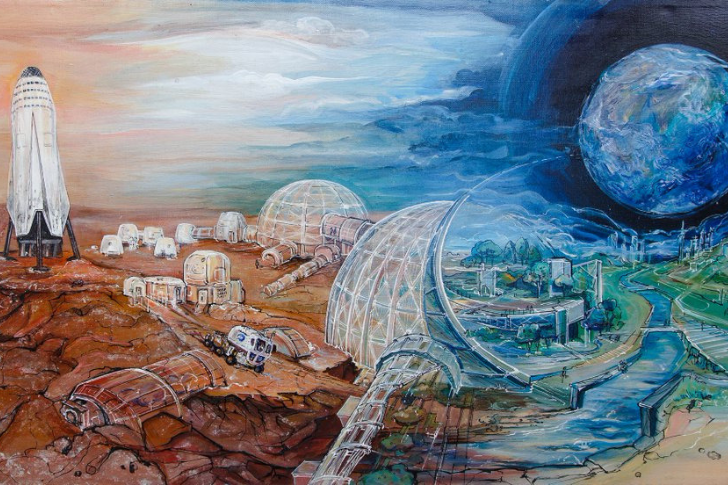
Surface conditions and the presence of water on Mars make it arguably one of the most hospitable of the planets in the Solar System. That means after Earth, of course. Human colonization of Mars would require In Situ Resource Utilization (ISRU).
These technologies combined with the vast natural resources should enable pre- and post-human arrival. ISRU will greatly increase reliability and safety. It will reduce the cost for human colonization of Mars. Architectural experts have drawn up prototypes of what living conditions on Mars might be like when the Red Planet is colonized by humans.
A Look into Martian Residency

A panel of specialists worked alongside a visualization team to predict how future Martian homes are likely to look. The interior and exterior images were released for a variety of futuristic residential builds.
The team produced particulars for three distinct dwellings; an apartment aimed at young professionals, a family home and a luxury mansion. Key considerations include light and how to protect the living area of homes from cosmic rays and hazardous levels of radiation. Furthermore, they made sure of insulation from the cold and protection from severe dust storms.
The Future of Architectural Designs in Mars
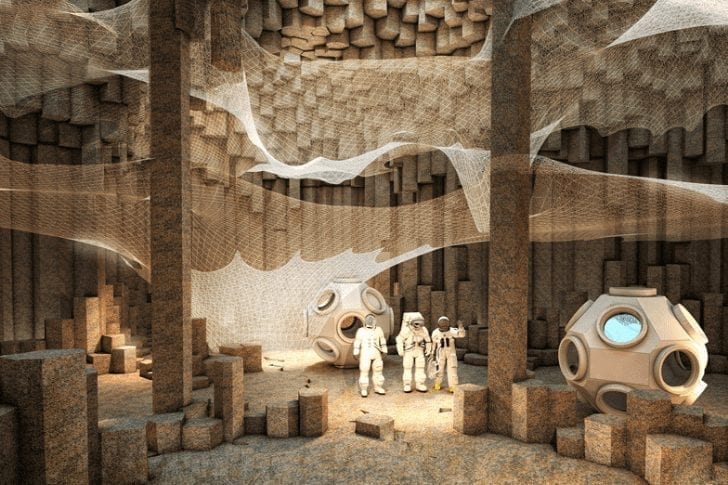
The Mars apartment block will feature several living pods aimed at individuals and couples. These have tunnels leading to a central shared garden and workspaces. The family home is built within a protective cave, with a driveway leading to an inbuilt garage as well as a conservatory-style veranda made from protective glass that offers a small indoor garden area.
It is protected from the sun’s rays by tinted glazing, featuring coating technology. This technology is developed to filter out the radiation and rammed earth walls. It is designed to protect from the cold as well as cosmic rays.
Martian Seasons

On Earth, spring, summer, autumn, and winter are all similar in length, because Earth's orbit is nearly circular. It moves at a nearly constant speed around the Sun. On the other hand, Mars' elliptical orbit makes its distance from the Sun change with time. It makes it speed up and slow down in its orbit.
Like Earth, Mars has seasons due to the planet's tilt upon its axis. However, it also has a secondary seasonal effect because of its highly elliptical orbit. The southern hemisphere is pointed away from the sun when the planet is farthest from it, resulting in far colder winters (and far hotter summers) than those in the northern hemisphere. If you were to live in the northern hemisphere, you'd enjoy about seven months of spring, six months of summer, a little more than five months of fall and only about four months of winter.
How does Time Work on Mars?
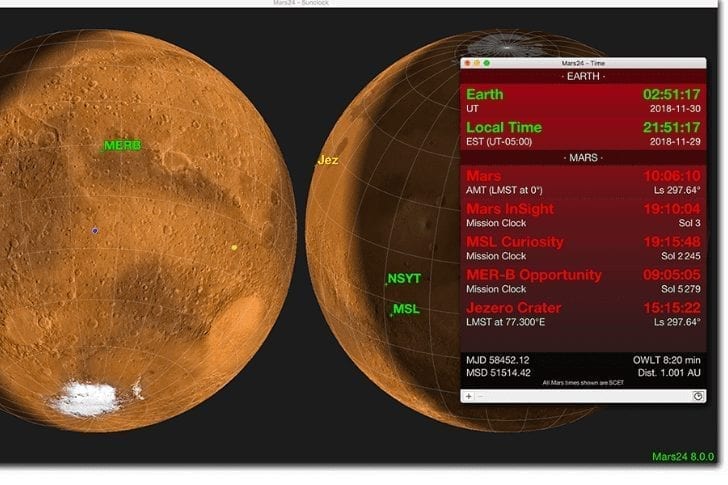
A year on Mars is about 1.88 Earth years, and a day lasts a little more than 24 hours. Time on Mars is easily divided into days based on its rotation rate and years based on its orbit. Martian solar days (sols) are only 39 minutes and 35 seconds longer than Earth days. There are 668 sols (687 Earth days) in a Martian year.
If you were to experience some unfortunate incident, a message sent home to Earth would take an average of 15 minutes to get there. It's annoying enough that it'd be hard to Skype with anybody!
How is the Weather on Mars?

The average temperature on Mars is minus 80 degrees Fahrenheit (minus 60 Celsius). However, the temperature can range from minus 195 F (minus 126 C) in winter near the poles to 68 F (20 C) during summer near the equator. The temperatures can also change dramatically within a single week.
Mars' temperature variations often result in powerful dust storms, which can sometimes shroud the entire planet after just a few days. These storms probably wouldn't cause any physical harm. Nonetheless, the dust could clog electronics and interfere with solar-powered instruments.
The Martian Air
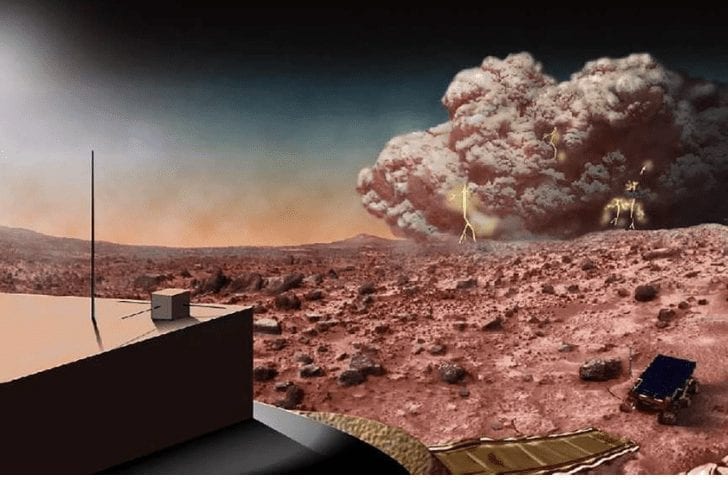
There isn’t any clear-cut evidence in the Martian air, but scientists have spotted some intriguing hints. Recently, NASA's Curiosity rover has rolled through two plumes of methane inside the 96-mile-wide (154 kilometers) Gale Crater. Gale Carter is the six-wheeled robot has been exploring since its 2012 touchdown.
More than 90% of Earth's atmospheric methane is produced by microbes and other organisms, so it's possible the gas is a signature of modern Martian life. Abiotic processes can generate methane, too. An example would be the reaction of hot water with certain types of rock. Even if the Mars methane is biogenic, the creatures that created it could be long dead. Scientists think the Red Planet methane plumes leaked out from underground. Furthermore, there's no telling how long the gas lay trapped down there before making its way to the surface.
The Aesthetic Martian Sky

With these clear skies, the Martian night is full of stars. Amateur astronomers would want to look out for Mars' moons, Deimos and Phobos. These moons can come out at the same time. Both moons are far smaller than Earth's moon but they can partially eclipse the sun during the day.
The daytime sky generally has an orange tint to it because of all the dust. Sunrise and sunsets look similar to those on Earth during a very hazy day, except that the area around the sun is blue.
Entertainment on Mars

The surface of Mars offers up a few great opportunities for sightseeing. If humans were to completely colonize Mars, certain places would become national parks.
A sightseeing spot could be Olympus Mons. It is the tallest volcano in the solar system, reaching 16 miles (25 kilometers) above its surrounding plains. Valles Marineris, on the other hand, is a giant system of valleys about the distance from Los Angeles to New York. A visit to the Viking landers and Mars' tremendous polar ice caps would be a dream. It also sometimes gets dry ice snowfall.
Martian Oceans

Spectroscopic analysis showed that the streaks are hydrated perchlorate, a briny liquid of perchlorate salt with water trapped in its crystals. The salt causes water to remain liquid at much lower temperatures than on Earth. Perchlorate brine can stay liquid down to minus 94 degrees Fahrenheit (minus 70 degrees Celsius).
The brine boils at 75 degrees F (24 degrees C), close to the highest summertime temperature on the surface of Mars. Scientists estimate that 4.3 billion years ago, Mars had a huge ocean covering its entire northern hemisphere. This ocean would have contained more water than Earth's the Arctic Ocean.
Future Excursions to Mars

ExoMars is a European-led multi-spacecraft program currently under development by the European Space Agency (ESA) and the Russian Federal Space Agency for launch 2020. Its primary scientific mission will be to search for possible biosignatures on Mars. Furthermore, the Mars 2020 rover is a Mars planetary rover mission by NASA with a planned launch in 2020. It is intended to investigate an astrobiological relevant ancient environment on Mars. It will also investigate its surface geological processes and history.
Mars Sample Return Mission – The best life detection experiment proposed is the examination on Earth of a soil sample from Mars. Should dead organisms be found in a sample, it would be difficult to conclude that those organisms were alive when obtained.
Is Mars a Part of the Upcoming Future?

It's unknown where astronauts will land on Mars for any of the planned missions. However, a future Martian space colony would probably want a permanent base somewhere in the low northern latitudes.
Even if there were no life on Mars, it would be exciting to know whether there used to be living there. So in addition to looking for living bacteria, NASA will be searching for tiny fossils that might indicate life got a start early in Mars' history.
